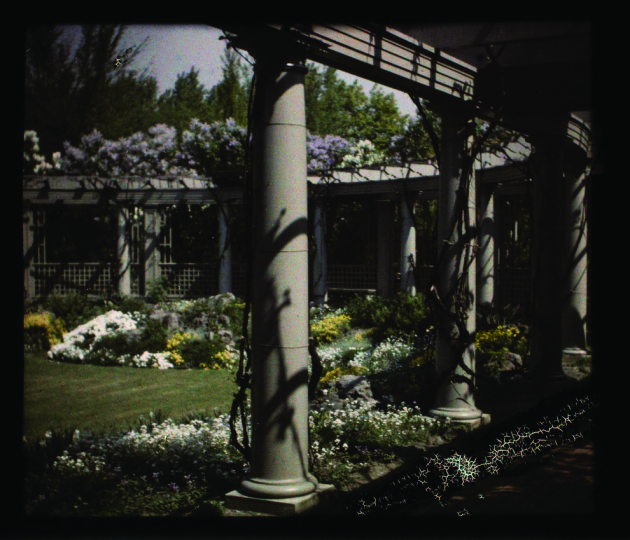Restoring an iconic garden at the George Eastman Museum

Long before awe walks or forest bathing became all the rage, George Eastman commissioned a rock garden designed to offer respite from the architectural formality of his Colonial Revival mansion and the elegant gardens flanking the estate. The Rock Garden, circa 1908, was designed by noted landscape architect Alling S. DeForest. He designed the informal garden rocky landscape to function as a picturesque destination for relaxing and enjoying stunning vistas of the 8.5-acre property. J. Foster Warner, in collaboration with DeForest, designed the 250-foot-long Grape Arbor, circa 1921, which has become an iconic feature of the estate, now the Eastman Museum.
Thomas Edison, Admiral Richard Byrd, and Booker T. Washington are just a few of notable historic figures who may have strolled through the Rock Garden during their visit with Eastman at his home. And if Bruce Barnes, the Ron and Donna Fielding Director of the Eastman Museum, achieves his vision for the restoration of the iconic garden, it will become a place of respite for thousands more people visiting the museum and Rochesterians living in the Neighborhood of the Arts.
“This project will address urgent and much-needed repairs to the Grape Arbor so that all visitors and community members may safely enjoy it. Significant accessibility improvements will provide a welcoming experience for all visitors, regardless of physical limitations, while assuring the garden is sustained for future generations,” says Barnes. The museum is also in the process of removing the fence running along the University Avenue section of the property. “We’d like to open ourselves up more to the neighborhood.”



For more than a century, the Grape Arbor has been exposed to Rochester’s annual freeze and thaw cycle, resulting in severe deterioration and instability. To protect the safety of museum visitors and community members who use the property as a park, a fence has been erected to restrict public access to the Rock Garden and its Grape Arbor.
The restoration is estimated to cost more than $1.1 million. The museum is well on its way to cover the cost with the New York State Office of Parks, Recreation, and Historic Preservation Council committing $500,000 to the project, the Davenport Hatch Foundation contributing $75,000, a gift from the estate of Bruce B. Bates, and a major gift from a former trustee. “We’re about eighty percent funded for the project,” says Bates. He is optimistic that other donors will help make the restoration a reality.
Because the original planting plan for the Rock Garden has never been found, historical photographs were used to help determine key elements of the garden, including the shape and size of the planting beds, how the rock outcrops were arranged, and what specimen plants were used. Landscape designers also looked to other historical documents and gardens to guide their decision for plants and plans. Among the historical gardens used as reference were the Olmsted Brothers’ Alpine Garden in Thompson Park in Watertown (1903) and Mrs. Thompson’s Victorian Rockery at Sonnenberg Gardens in Canandaigua, designed by John Handrahan (1916).

The garden is enveloped by a border of shrubs that includes lilacs (Syringa vulgaris), mock orange (Philadelphus coronarius), and forsythia (Forsythia spp.). The shrubs will be rejuvenated or replaced to reflect DeForest’s original design. Plantings in the garden feature flowers scrambling over dolomitic rocks, donated to the museum by Penfield Country Club, from spring into fall. Among the plants you’ll find in the garden are bugleweed (Ajuga reptans), Japanese anemone (Anemone x hybrida), bloody cranesbill (Geranium striatum), candytuft (Iberis sempervirens), mother of thyme (Thymus serphyllum), and creeping speedwell (Veronica prostrata).
The museum hopes to complete the work by November 2024 to help celebrate its seventy-fifth anniversary. “Renovating this historic gem is one of our top priorities,” says Bates. Work will commence once the museum has raised the needed funds. “We’ve never had to close anything this prominent before. We’re very eager to have this treasure open to our community once again.”





